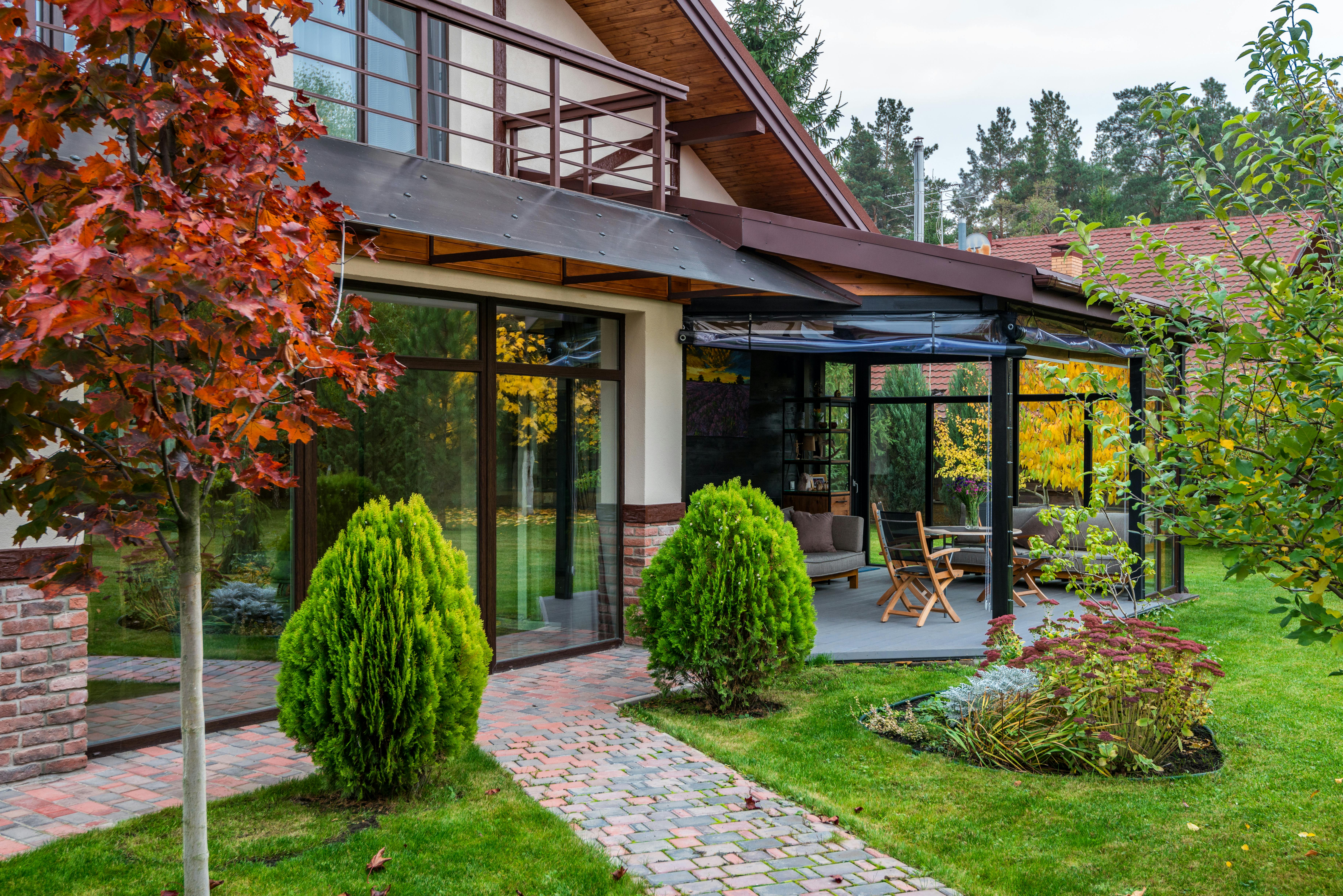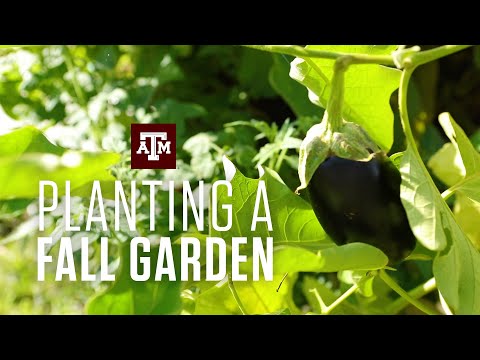Fall gardening in Texas is a popular activity for those looking to enjoy the warm autumn weather while harvesting fresh vegetables before the cold winter months. With the right preparation and knowledge of when to plant fall garden in Texas, gardeners can have a successful harvest. Knowing the ideal time to plant your fall garden is essential for a successful crop and will depend on where you live in Texas.The best time to plant a fall garden in Texas is typically during the late summer months, from late July through early September. This allows the plants time to establish themselves before cooler temperatures arrive. Additionally, by planting in late summer, you can take advantage of the longer days and warmer temperatures that come with this season.
Late Summer Planting Considerations
Fall gardening in Texas can be a great way to enjoy the outdoors and have a harvest of vegetables. However, it is important to consider the climate and the season when deciding what to plant. The temperature and rainfall in Texas can vary greatly from late summer to early winter, making it important to select plants that can tolerate the changing conditions. In addition, some plants need more time to mature before fall frost arrives, so they must be planted earlier in late summer or early fall.
Start with Cool Weather Crops
Cool weather crops like broccoli, lettuce, spinach, cauliflower, kale and other leafy greens are a great place to start when planning a fall garden in Texas. These vegetables can usually survive some cool nights and light frosts and should be planted in late summer for a fall harvest. It’s important to check local frost dates before planting any cool weather crops so they don’t get caught by an early cold snap.
Heat Loving Vegetables
Texas temperatures can still be quite warm during the fall months so it is also important to include some heat loving vegetables in your garden plan. Tomatoes, peppers, okra and eggplant are all good choices for Texas gardens in late summer or early fall. Planting these vegetables on opposite sides of the garden from your cool weather crops will help ensure that they don’t get too much shade or chill during cooler days.
Timing Is Important
It is important to note when each type of vegetable needs to be planted for best results. Most cool weather crops should be planted as soon as possible after late summer for best results while heat loving vegetables may need more time before frost arrives. Check with your local extension office or online resources for specific planting dates for each type of vegetable.
Planning for Late Fall Harvest
For those looking for an extended harvest into late fall or even winter months there are several options available. Many root crops such as carrots, potatoes and turnips can survive light frosts and can be harvested into winter if protected with mulch or row covers. Greens such as kale and spinach may also survive light frosts if given some protection from extreme temperatures.
By taking the time to plan ahead and selecting plants that will thrive in Texas’ variable climate you can have a successful garden this fall no matter where you live!
What to Plant in a Fall Garden in Texas
Fall is an ideal time for gardening in Texas, as the cooler temperatures and increased rainfall make it easier to establish and maintain plants. There are many vegetables, herbs, and flowers that thrive in the Texas climate during the fall months. Some of the most popular plants for a fall garden in Texas include collard greens, kale, Swiss chard, sweet potatoes, pumpkins, squash, lettuce, garlic, onions, radishes, carrots, beets, broccoli, cauliflower and spinach. Herbs such as basil, oregano and thyme are also popular choices.
Flowers are also popular additions to a fall garden in Texas. Pansies or violas are often planted during the fall months since they can withstand cool temperatures and even light frosts. Sunflowers also look beautiful during this season when planted close together along a fence line or walkway. Marigolds will bloom throughout the fall season and are known to repel certain pests from other vegetables or flowers that may be growing nearby.
In addition to flowers and vegetables there are several types of grasses that can be planted during the fall months in Texas. Fescues and rye grasses are both popular choices due to their ability to withstand cooler temperatures and their lush green color year-round. These grasses can be used to create lawns or borders around gardens as they require little maintenance once established.
Overall there is no shortage of options for creating a beautiful and productive garden during the fall months in Texas. With careful planning and attention to soil condition and temperature range it is possible to have a thriving garden full of vegetables herbs and flowers all year round no matter where you live in Texas!
Preparing the Soil for Planting a Fall Garden in Texas
Preparing the soil for planting a fall garden in Texas is essential for successful gardening. The first step is to test the soil to determine its nutrient content and pH levels. A soil test can provide valuable information on the fertility of the soil and identify any deficiencies that need to be corrected. Once the soil is tested, it can be amended with organic matter such as compost, manure, or peat moss. This will improve its structure and drainage, while also providing nutrients. It is also important to loosen the topsoil with a shovel or spade before planting. This will help ensure that roots can penetrate effectively and reach available water and nutrients.
The next step in preparing soil for planting a fall garden in Texas is to add fertilizer. Fertilizers provide essential nutrients such as nitrogen, phosphorus, and potassium that are necessary for healthy plant growth. Most soils can benefit from an application of a slow-release fertilizer before planting. After applying fertilizer, it should be worked into the topsoil using a rake or hoe.
Finally, it is important to keep weeds under control when preparing soil for planting a fall garden in Texas. Weeds tend to compete with plants for moisture and nutrients, so it is important to keep them at bay during this time. Hand weeding is usually effective but may not be enough if there are large numbers of weeds present. In this case, herbicides may need to be applied according to label instructions.
Planning Your Garden
Planning and preparing your garden is the first step in creating a successful fall garden in Texas. Choose a location that gets at least six hours of direct sunlight each day and make sure the soil is well-draining. You can also amend the soil with compost or composted manure to help provide nutrients for your plants. It’s important to choose plants that are suited to the climate of Texas, as well as your growing zone. Research what vegetables and herbs do well in Texas and create a plan for what you want to grow. Make sure you have enough space for all of your plants. Once you have a plan, it’s time to purchase supplies and get started!
Planting Your Garden
When planting your garden, it’s important to follow the directions on each seed packet or plant tag. Plant seeds at the appropriate depth and spacing for best results. If you’re planting transplants, make sure they are planted at the same depth as they were previously growing. Water thoroughly after planting and add mulch around plants to retain moisture and control weeds. Once planted, keep an eye on your garden and make any necessary adjustments.
Caring For Your Garden
Caring for your garden is essential for a successful harvest. Water regularly, making sure not to overwater or underwater your plants. You may need to water more frequently during hot summer months or when there is little rain fall. Fertilize with an organic fertilizer according to package instructions to ensure proper nutrition for your plants. Monitor your garden regularly for pests or disease and take steps accordingly if any problems arise.
Harvesting Your Garden
Harvesting vegetables from the garden can be one of the most rewarding parts of gardening in Texas! It’s important to harvest fruits and vegetables when they are ripe so they have maximum flavor and nutrition. Check each plant daily once it starts producing fruit or vegetables so you can harvest them at peak ripeness. Enjoy all of the delicious produce from your fall garden!

Best Practices for Watering a Fall Garden in Texas
Fall gardens in Texas require careful watering to ensure optimal growth and harvest. Watering too little or too much can cause significant damage, so it’s important to develop a plan that will give your plants the moisture they need without overwatering. Here are some best practices to follow when caring for your fall garden in Texas:
First, it’s important to determine how much water your plants need. Generally, most plants need about 1 inch of water per week. You can measure this by placing an empty can in your garden and measuring the amount of water that accumulates over time. This will help you determine how long you should water your garden.
Next, it’s best to water your garden early in the morning. This allows the sun to dry up any excess moisture before evening temperatures drop and put your plants at risk for fungal diseases. Avoid watering during the middle of the day when temperatures are highest as this can cause evaporation before the roots have a chance to absorb the moisture.
Finally, be sure to water deeply and evenly throughout your garden. Soaker hoses are a great way to ensure even coverage while also allowing you to conserve water since they deliver moisture directly to the root zone. Additionally, mulching around plants helps retain moisture and protect their roots from extreme temperatures.
By following these best practices for watering a fall garden in Texas, you can ensure that your plants get the moisture they need while also protecting them from over-watering or fungal diseases. With proper care, you’ll be able to enjoy a bountiful harvest all season long!
Common Pests and Diseases to Look Out For When Planting a Fall Garden in Texas
Fall is an ideal time to plant a garden in Texas, as the weather is cooler and the soil is still warm enough for plants to thrive. However, there are some common pests and diseases that you should be aware of when planting your fall garden. Common insects such as aphids, whiteflies, and cutworms can all cause severe damage to your plants if left unchecked. Additionally, fungal diseases like powdery mildew, rust, and late blight can also wreak havoc on your garden.
In order to protect your garden from pests and diseases, it is important to practice preventative measures such as crop rotation and using row covers when necessary. Furthermore, regularly monitoring your plants for signs of infestation or disease can help you catch the problem early on before it spreads throughout the entire garden. If you do find an infestation or disease in your garden, there are a variety of organic control measures that can be used such as insecticidal soaps or copper fungicides.
Finally, it is also important to make sure that you are not over-watering or over-fertilizing your plants as this can create ideal conditions for pests and diseases to thrive in. By following these simple steps you will be able to keep your fall garden healthy and vibrant throughout the season!
The Benefits of Growing Your Own Fall Garden in Texas
Fall is an ideal season for gardeners in Texas. With the cooler temperatures and plenty of sunlight, there are plenty of benefits to growing your own fall garden. From the increased yield of vegetables to the lower cost associated with gardening, here are some of the advantages to growing your own fall garden in Texas.
One of the biggest benefits to growing a fall garden in Texas is the increased yield of vegetables. With the cooler temperatures, plants will grow more vigorously and produce higher yields than they would during other seasons. This means that you will be able to harvest more produce from your garden and have a larger supply overall.
Another advantage to growing a fall garden in Texas is the lower cost associated with gardening. Since most vegetables are grown seasonally, you can purchase them at lower prices than you would during other times of the year. This makes it easier for you to get started with your gardening efforts and still have enough money left over to purchase supplies or make improvements as needed.
Finally, a fall garden in Texas can help you get more out of your gardening efforts. During this time of year, plants tend to be more robust and require less attention than they do during other seasons. This means that you can spend less time tending to your plants and more time enjoying their bounty. Plus, since many vegetables are ready for harvest during this time, you can enjoy fresh produce from your very own garden!

Conclusion
Fall gardening in Texas is a great way to enjoy the outdoors and produce your own food. Planting times vary depending on the type of crop you are growing, but generally speaking, you should begin planting your fall garden as soon as possible after the last frost in the spring. It is important to research which crops will do well in your area and understand when to plant them for maximum yield. With proper planning, you can have a successful fall garden that will provide you with fresh produce all season long.
The optimal time for planting your fall garden in Texas depends on the type of crops you are growing, where you live, and how much sunlight and moisture your garden receives. It is important to prepare the soil and choose appropriate crops for your region before sowing seeds or transplanting plants. By understanding when to plant for each type of crop, you can ensure that your garden has a successful harvest.

